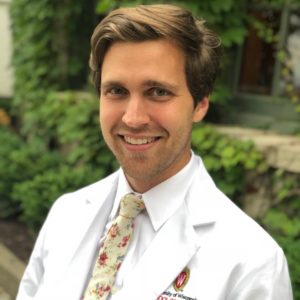The Problem
The American population under age 18 is projected to grow by only 3%, while the population aged 65 and over is projected to grow by 50% by 2030. It is estimated that the shortage of physicians will be around 100,000 by 2030. This puts enormous burden on the medical training system to train highly competent and invested physicians [1].
Previously, the burden of meeting the demand for physicians was on medical schools. They were responsible to admit a sufficient number of students to satisfy the ever-increasing demand for healthcare services. Medical schools have already taken it upon themselves to help solve the projected physician shortage problem. They have opened up 29.2% more seats since 2003 [2]. Now the bottleneck has shifted up to residency programs, which have not expanded their number of residency positions at the same rate that medical schools have expanded seats in their medical schools. There are a number of reasons for this.
One, residencies aren’t profitable. They do not generate enough revenue to cover their cost, which includes not only salary, but academicians and administrators to manage training.
Two, medical schools can scale where residencies cannot. Schools are using technological innovations, like recorded lectures, to meet the needs of teaching medical students the basic sciences. Residency programs do not have the luxury of adopting these methods, as their training is hands-on and does not lend itself well to scalable teaching technologies.
Because of these two reasons, residencies must procure funding from outside of the budget-conscious hospital or clinic. Typically, residencies receive the funds to operate from federal sources, specifically Medicare and Medicaid. However, federal funding for residencies has not increased in more than 20 years [3]. Indeed, it would be financially catastrophic for academic and community hospitals to expand to rapidly meet the future demand for healthcare without rapidly expanding the funding from external sources. The model of training a resident must change. Here, I will present my theory of how to expand residency training positions from a grassroots level independent of relying on our federal congress.
The Plan
I believe that the additional residency training positions should come from local and community funding efforts. Indeed, within our current model, residents are no more tied to the community in which they train than they are tied to their undergraduate institution, even though residents spend 3 to 6 years of their life in residencies and perform untold numbers of life-saving interventions in those communities. Often, residents have very little interest in the communities in which they train. They are there to become competent doctors. This is because our current model of training does not incentivize residents to remain in the community in which they train.
Theoretically, if provider-hungry communities wish to have more physicians in their communities, they would support a program designed to keep trainees practicing in their communities well into their careers, not just the years of training. Therefore, I suggest that we create new residency positions that not only incentivize residents to remain in the communities in which they train, but hold residents accountable to serve their communities better during their training.
Example in practice: the Dell School of Medicine
A good model for this is the recently-opened Dell School of Medicine in Austin, Texas. It is the first and only medical school to open with a vote from community members, allowing the entire community to become stakeholders in the medical school. The goal of the medical school is to improve the health of Austin as a whole. The medical students at the Dell School of Medicine are accountable to the community to be innovators, leaders, and servants to the community, and the community shows reciprocal trust in the mission of the students with continued funding for the school through increased taxation. Much of the money for the medical school comes from local sources and remains in local hands. Benefits are confined to the community. The small-scale funding operation is effective as it keeps those receiving benefits very close to those who are responsible for giving the benefits. This is a stark contrast to funding from the large mechanism of the federal government, which distances the beneficiary and payer. The same could and should be done with new residency positions. If residents are accountable to the community members, they will theoretically be much more invested in the health and overall well-being of that community.
Action Items for Implementation
I have three suggestions for community-funded residency programs.
One, that community-funded residency positions outcompete other residencies’ salary. The more competitive the resident pay, the more likely the smaller, community-based program is to attract not only the best and brightest individuals, but the ones most suited to the community.
Two, that residency directors be democratically elected positions. This ensures that the community in question has a voice not only in whether it receives residents, but in who selects those residents.
Three, that communities offer loan forgiveness in exchange for long-term commitment to a community. Loans forgiveness is a major draw for many students with mounting student loans.
A Unique Roadmap to Prosperity
You may ask, then, how this is different from programs like the National Health Service Corps. For one, the funding for the residency positions are collected from, invested in, remain with, and exclusively benefit communities. This means that communities may be more flexible, creative, and autonomous in directly negotiating with residents. Second, cities that are not strictly defined as “underserved” may participate. Lastly, unlike NHSC and other federal government-funded scholarship programs, the new residency programs would be open to all specialties, as our critical shortage of physicians extends far beyond primary care.
It will take a Herculean effort to close the gap of the projected physician shortage. But, with innovative and creative solutions like grassroots, community-funded residency programs, we will begin to chip away at the problem. Rufus Sweeney, M1 from University of Wisconsin School of Medicine and Public Health
- http://1. https://news.aamc.org/press-releases/article/2019-workforce-projections-update/
- http://2. https://www.aamc.org/newsroom/newsreleases/431036/20150430.html
- http://3. https://aamc-black.global.ssl.fastly.net/production/media/filer_public/98/7b/987b00be-2ca9-4466-89cd-0892d233f63d/gme_training_tomorrows_physician_workforce.pdf
